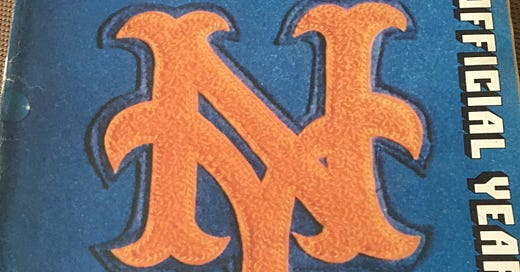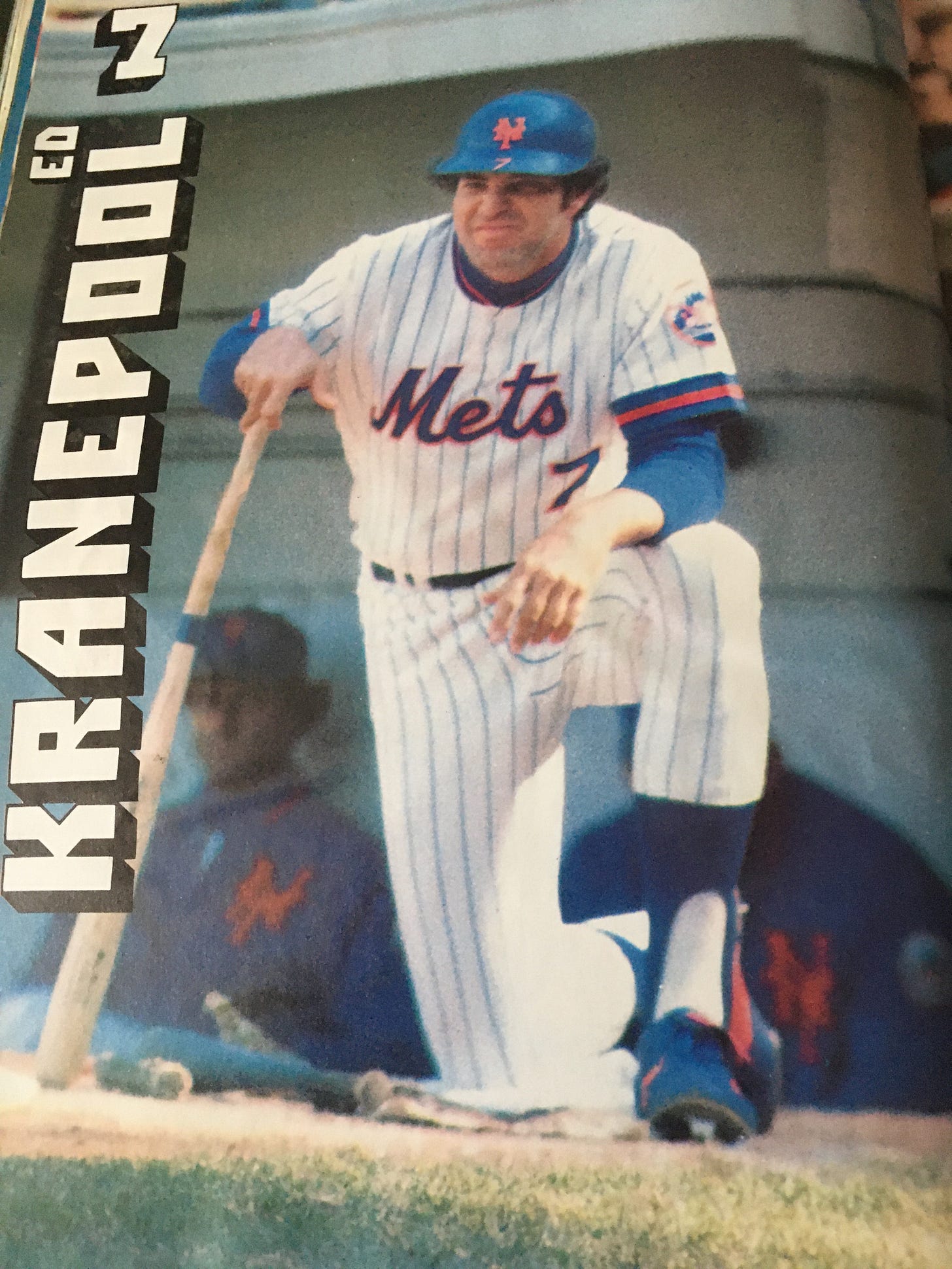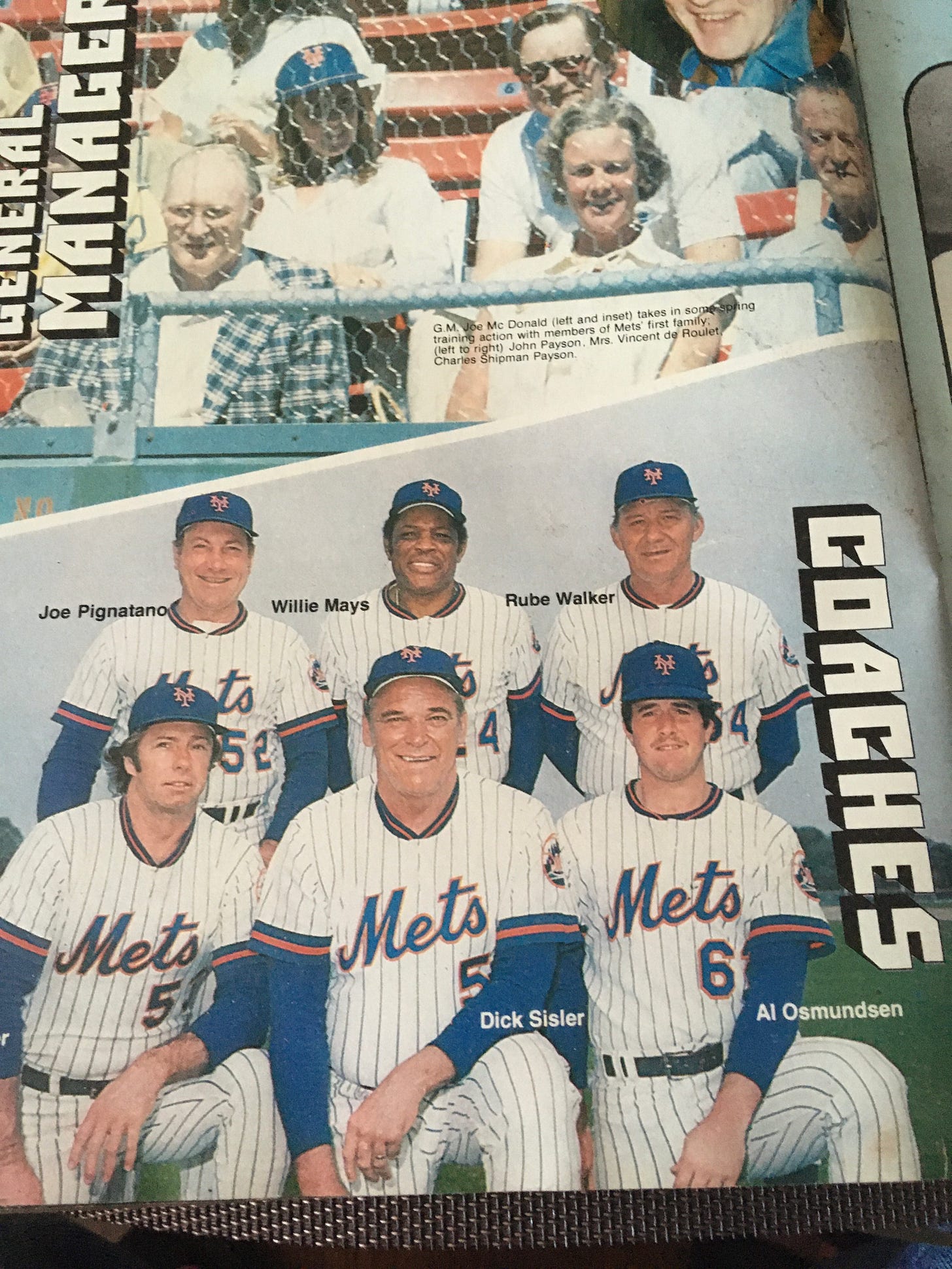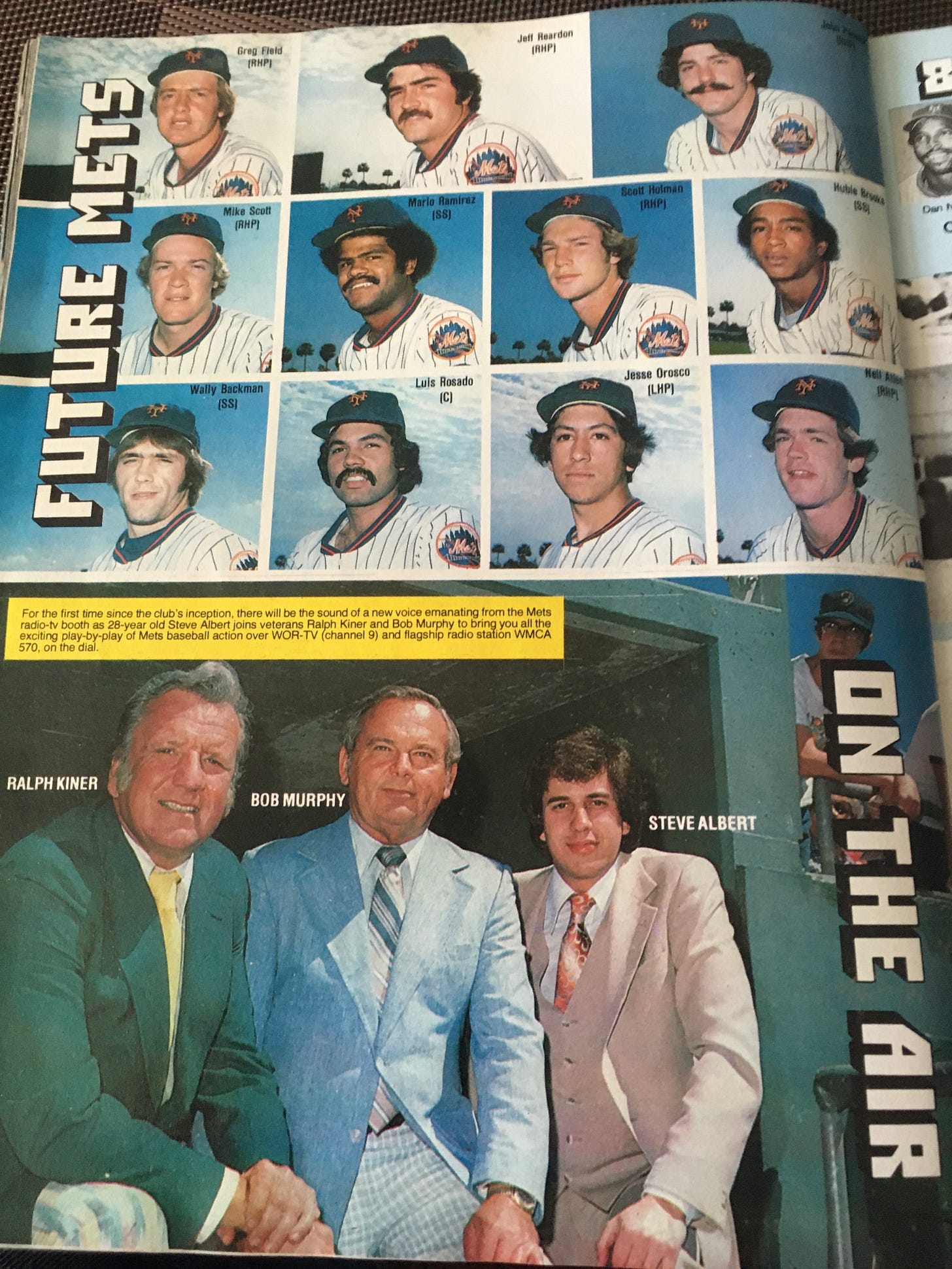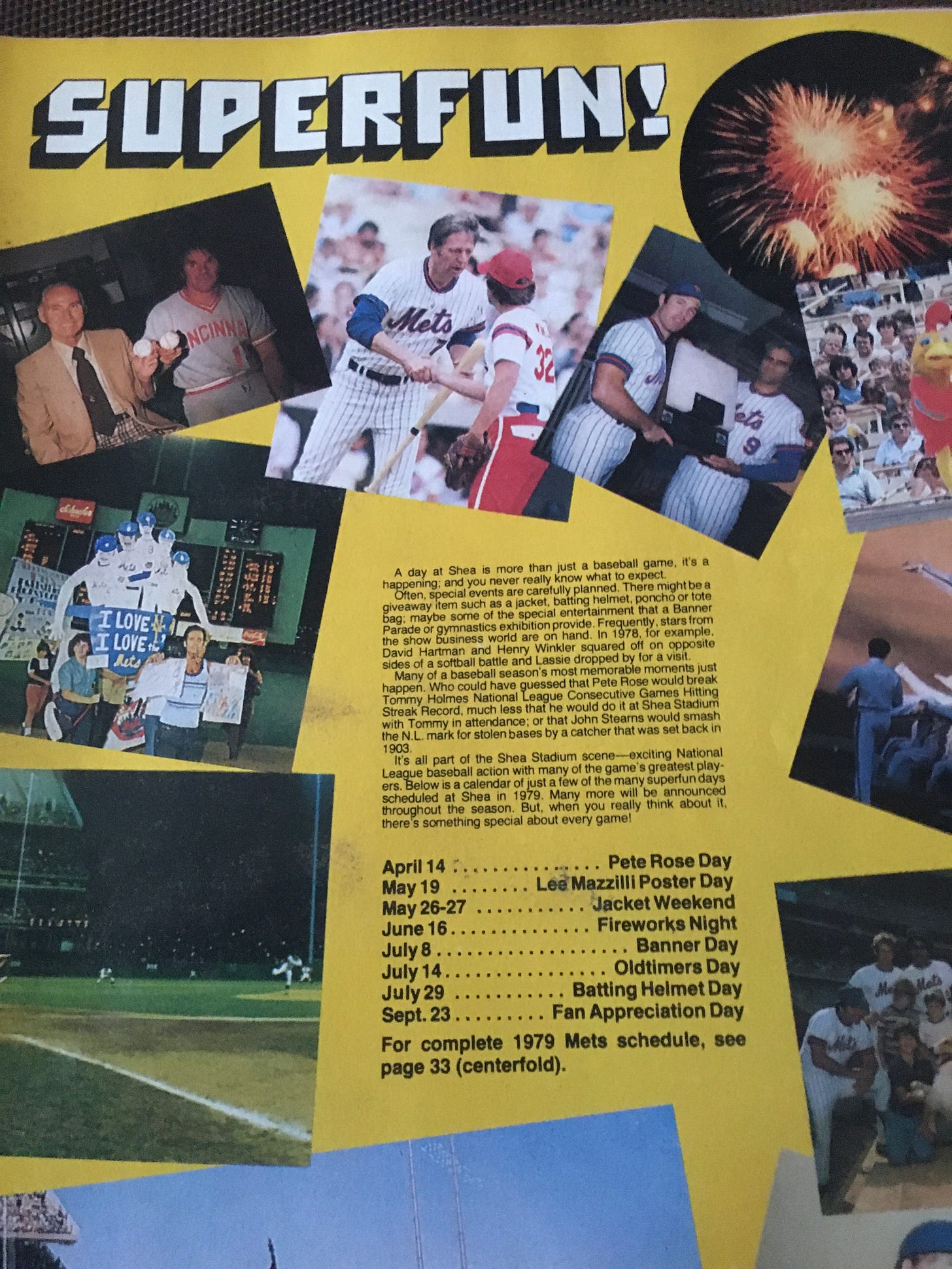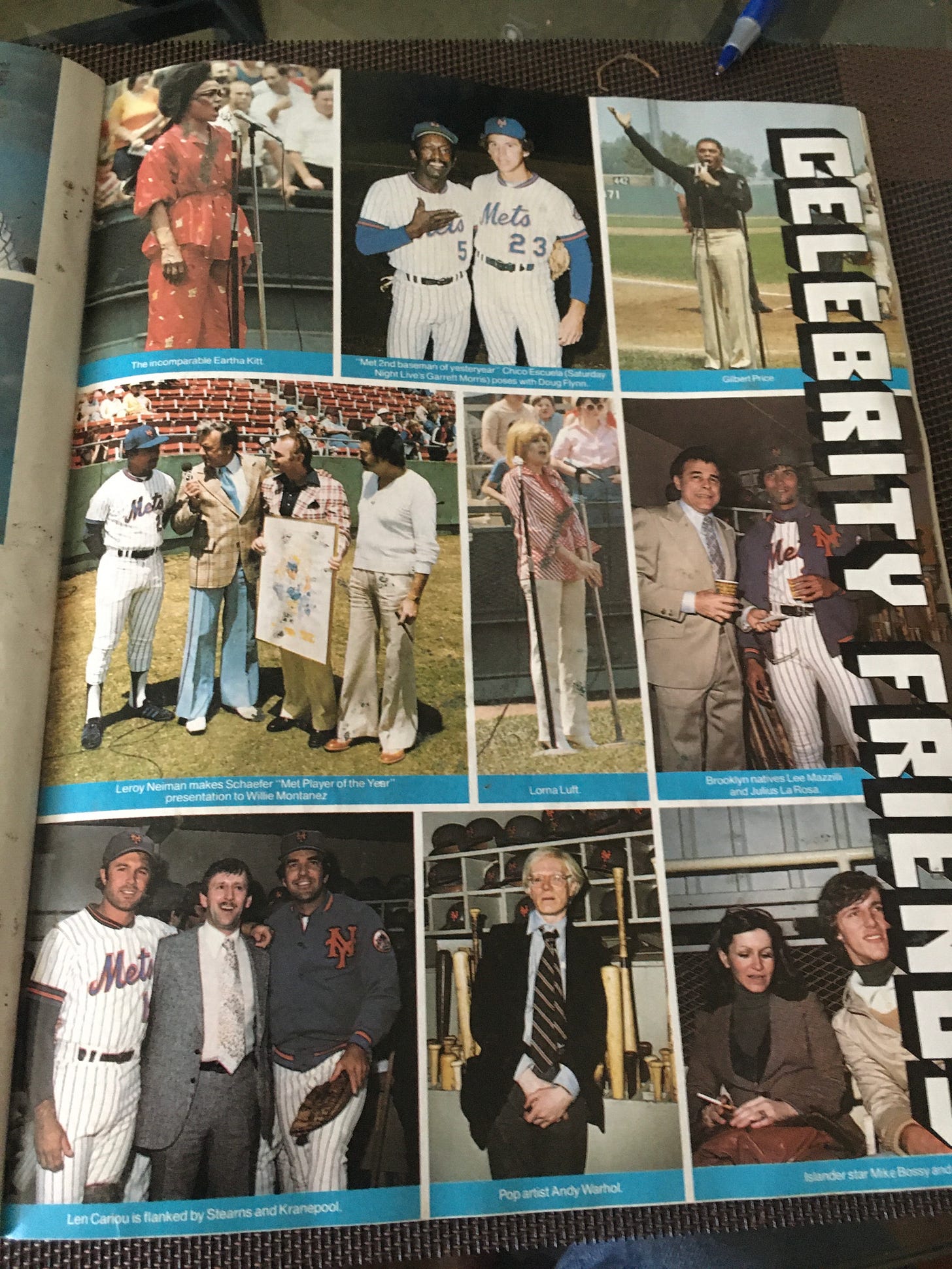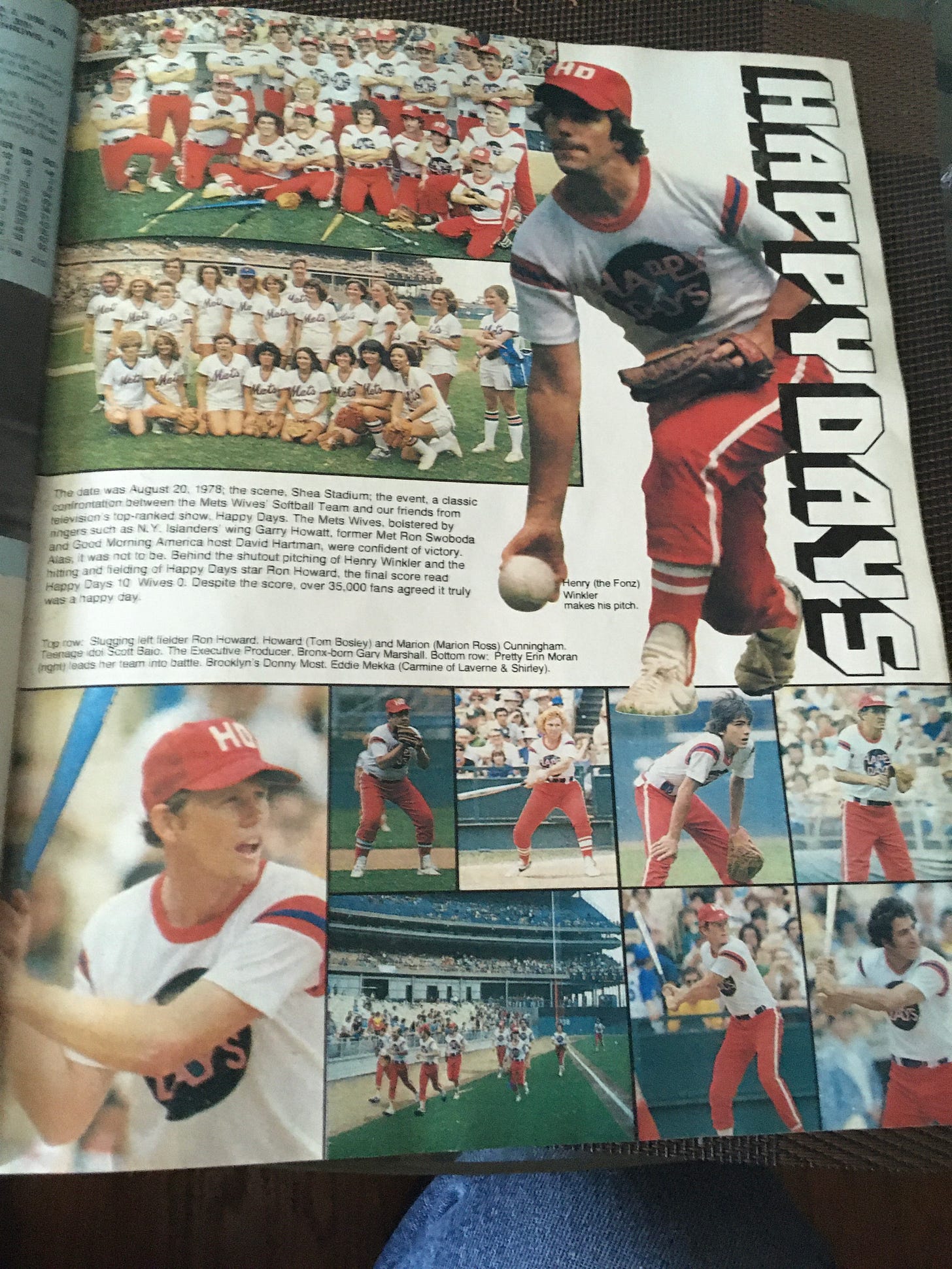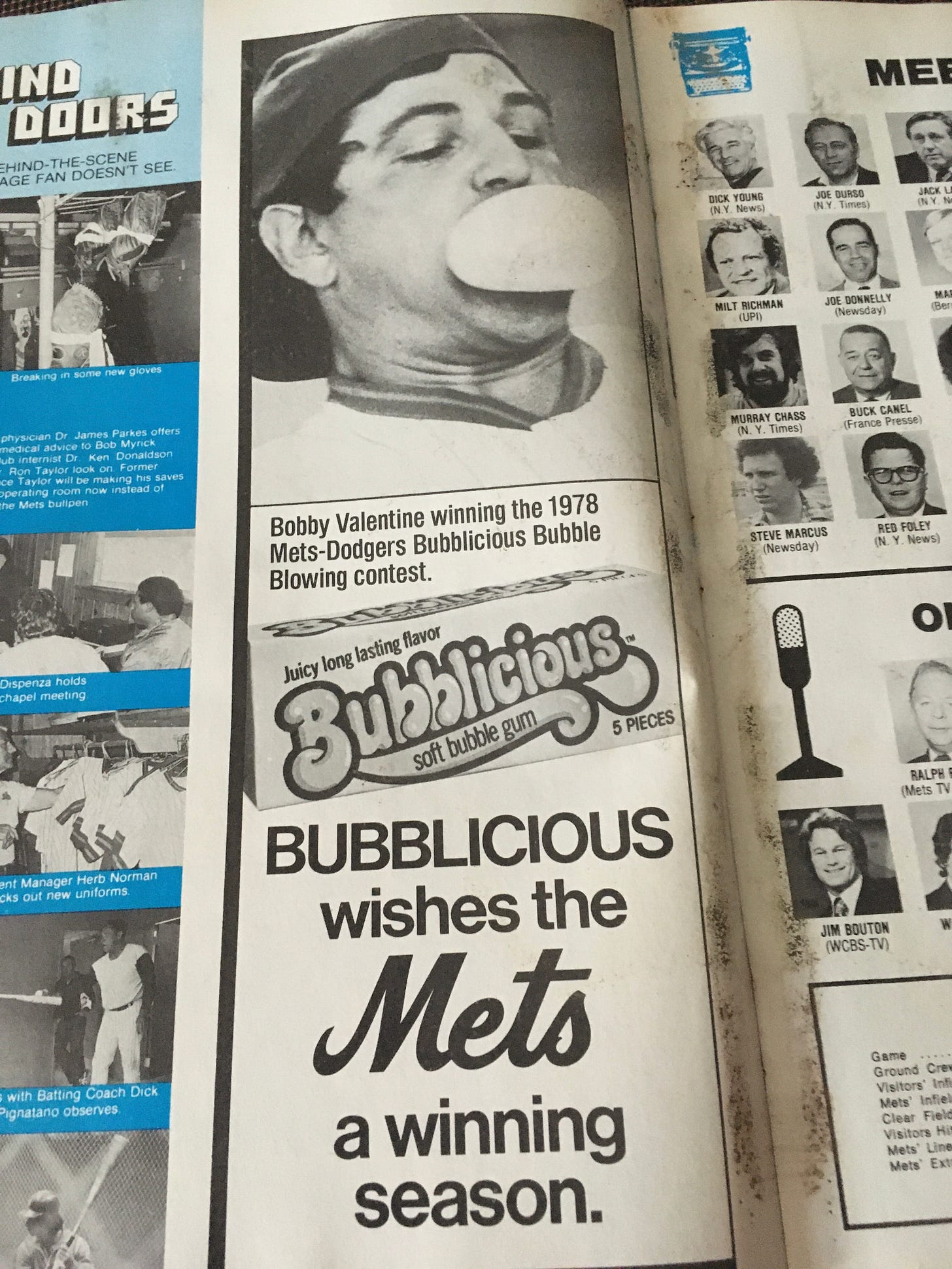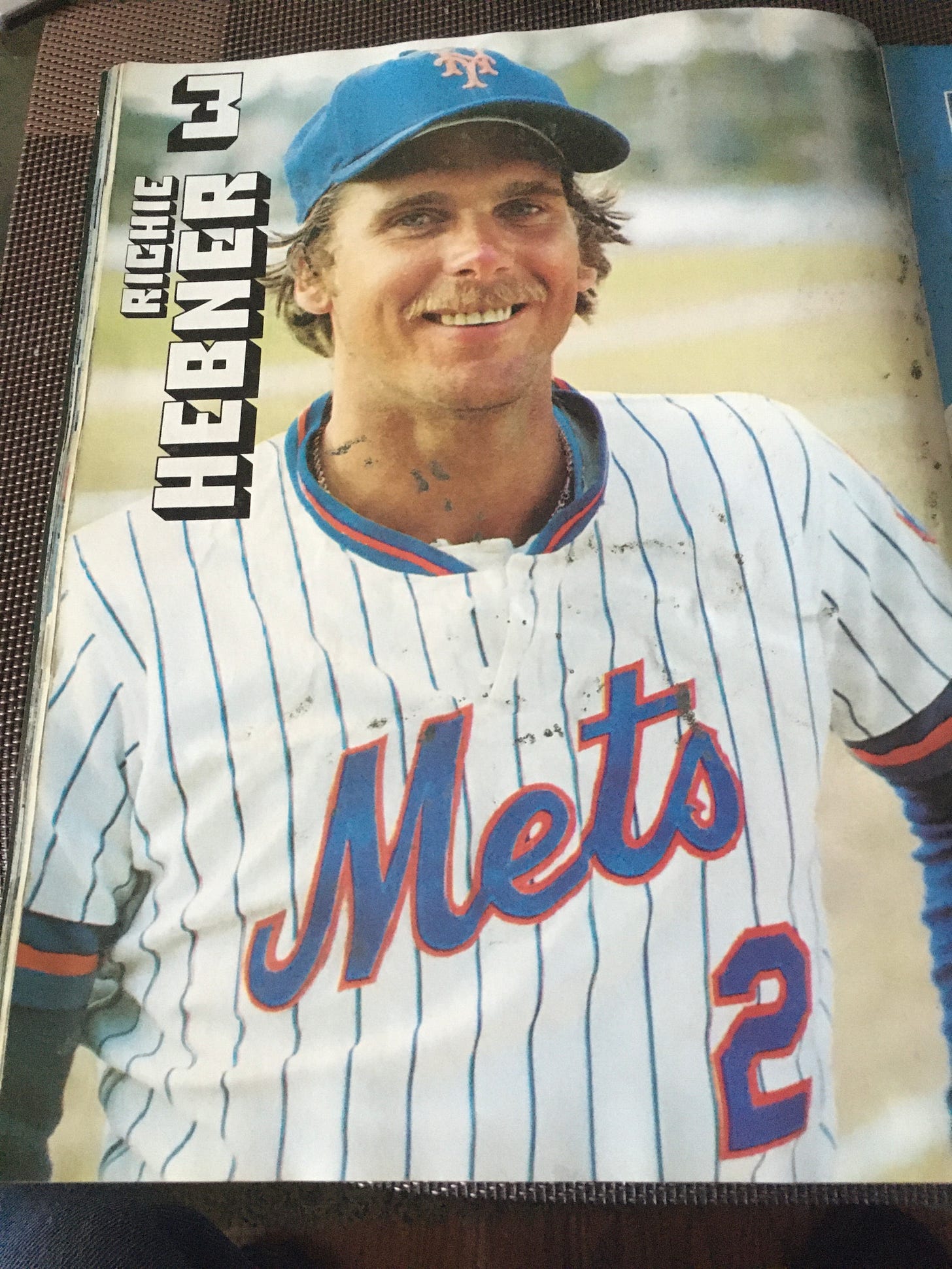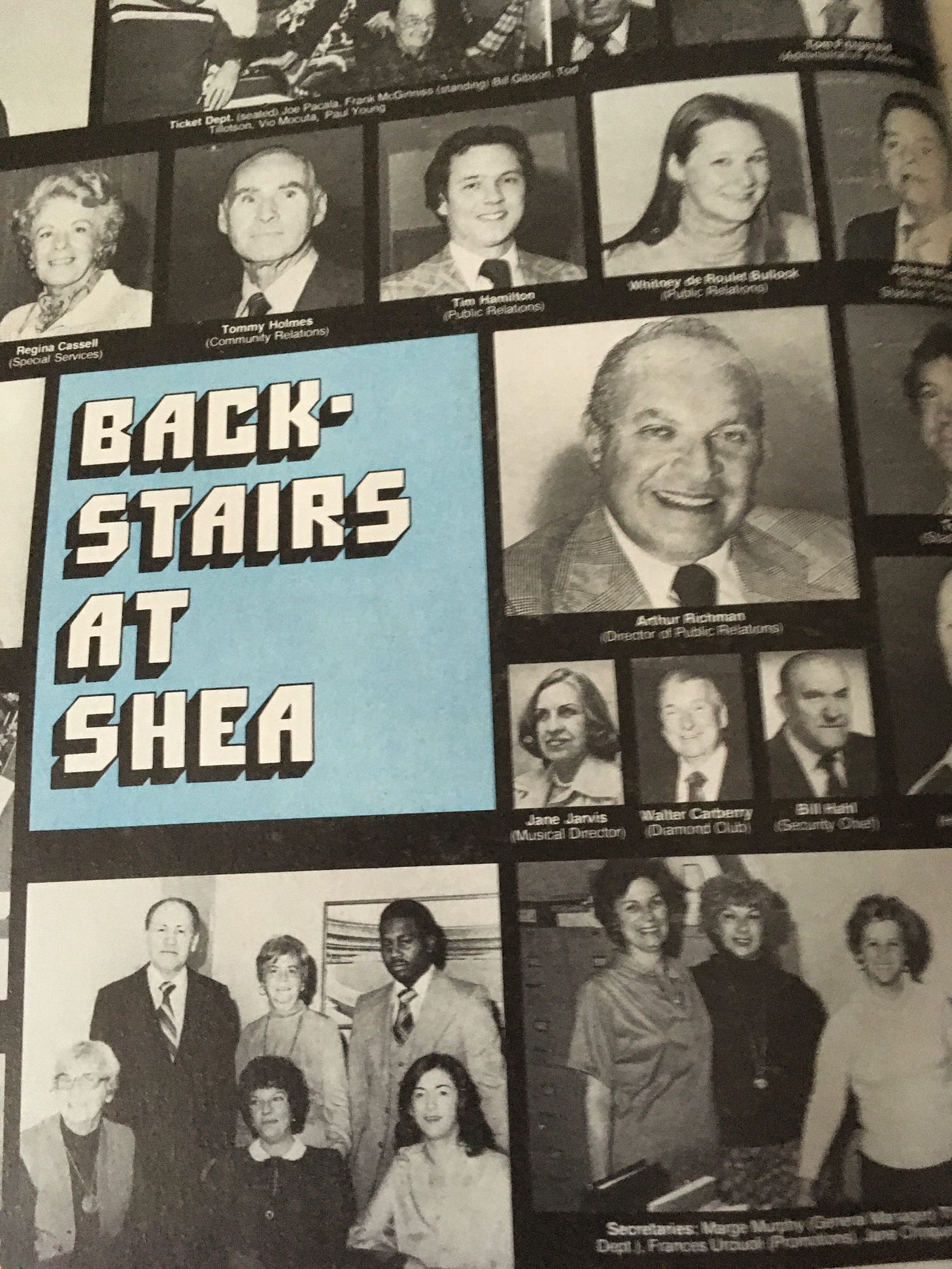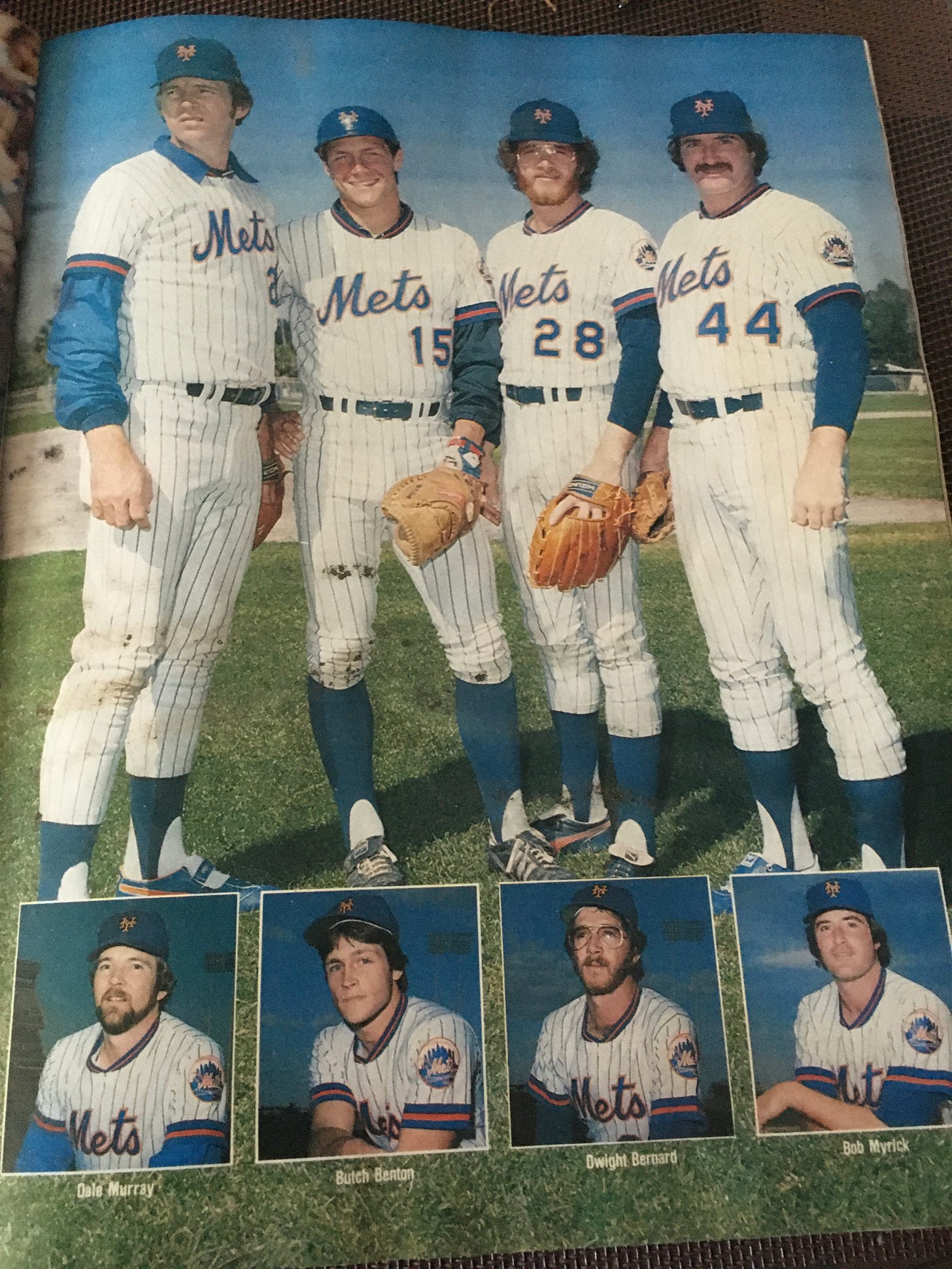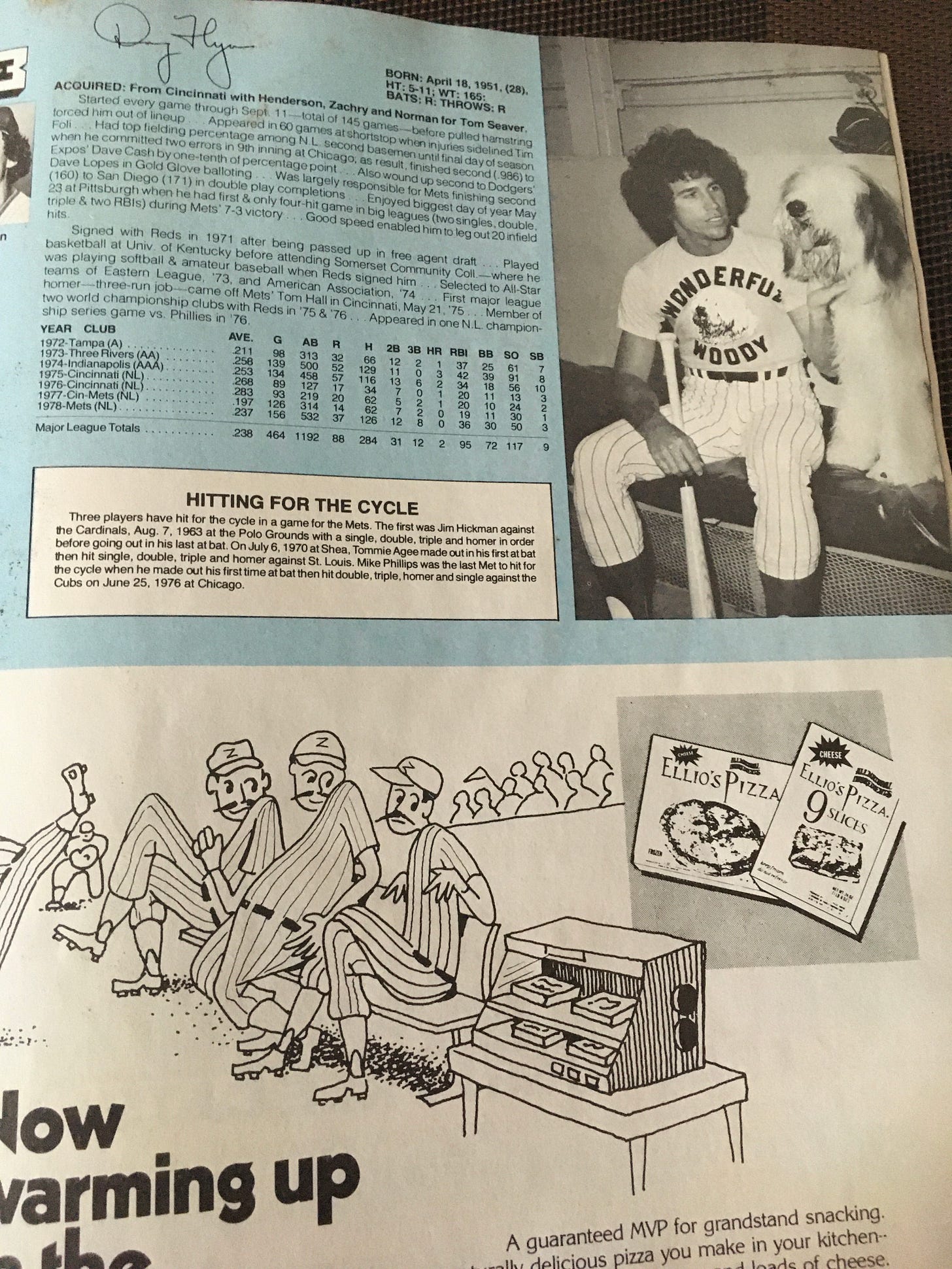1979
Ah, 1979. On the surface, it was yet another miserable last place season but this one was unlike most others. First off, it was the final year of the original team ownership. Before too long, there would be a new man signing the checks and more importantly, M. Donald Grant would become a distant memory. Just as important, this was back in the day when the #1 pick in the amateur draft would alternate between the 2 leagues. This was the National League’s turn, whichever NL team finished with the worst record in 1979 would earn the #1 pick in the 1980 draft. That was your New York Mets, and they went on to select a tall, skinny power-hitting outfielder from Crenshaw High in Los Angeles. We can check in on that guy in a few years.
During this series I had been looking at the gradual dismantling of the 1969 Miracles. Jerry Koosman was traded in the offseason, which meant there was only one man left standing in 1979. It seems appropriate that Ed Kranepool was the last man remaining. Although not technically an original Met, he made his debut in the inaugural 1962 season not long after graduating high school in the Bronx. And with that heavy New Yawk accent of his, he always seemed like one of us. 1979 was his final major league season, it’s fitting that no club signed him as a free agent that offseason. It was one thing to see Bud Harrelson in a Phillies uniform; the sight of Ed Kranepool in any uniform other than a Mets uni would not have seemed right.
The faces of 1969 were more than just the players. In 1979 pitching coach Rube Walker and bullpen coach Joe Pignatano were still with the team, which meant that more coaches than players lasted throughout the decade. That seems impossible nowadays. Coaches are almost treated as cannon fodder; the first ones to go when a team underachieves. These two men originally came with Gil Hodges from the Washington Senators and ultimately served under multiple managers. Neither left until after the 1981 season, when Joe Torre was fired as Mets skipper and they went with him to the Atlanta Braves.
The 1969 era may finally be over, but another championship was on the horizon. The organization’s player development department left a lot to be desired (the new regime would drastically improve the minor league system) but here we can see the initial yearbook appearances of future 1986 heroes. Technically Lee Mazzilli is the first ‘86er, but he would eventually be traded away before returning to the team late in the 1986 season. If we’re limiting ourselves to players who were with the ‘86 team from Opening Day, then we have our first two. Jesse Orosco was part of the return in the Koosman trade, and hello to young Wally Backman.
Make no mistake, the sale of the franchise was long overdue and necessary. The sins of the regime were numerous, and there was an ever present feeling of cluelessness. Remember the brief period when the team mascot was Mettle the Mule? For further evidence take a look at the 1979 promotional schedule. Pete Rose Day? Pete Rose Day in Shea Stadium? Not even the Wilpons went so far as to stage a Chase Utley bobblehead day.
Once again the yearbook provided snapshots of some of the previous season’s visiting celebrities and there is one pictured here who clearly stood out above the others. I need to know more about Andy Warhol’s Shea Stadium appearance. There is an intriguing 30 For 30 to be found.
On a related note, Joe Torre had a brush with greatness. Those of us of a certain age will remember the long-running Xerox ad campaign which featured the monk Brother Dominick. Fun fact - the actor who portrayed the character was the father of Ian Eagle!
But if you seek some serious late-70s star power, look no further than the softball game matching Mets player’s wives against the cast of Happy Days. No truth to the rumor that the Mets offered a major league contract to Donny Most after the game.
Thankfully the 1979 yearbook made room for what was the true 1978 season highlight. That would of course be Bobby Valentine’s triumph in a bubble gum blowing contest. The club released him toward the end of ‘79 spring training, so this was his last major contribution to the club as a player. Don’t worry, he’ll eventually return.
The Mets’ biggest offseason trade that year didn’t turn out particularly well. It must have taken a lot of work for the photographer to snap a photo of Richie Hebner smiling because I doubt he had a single happy moment as a Met. He made it clear from day 1 that he did not want to be there. In a sense it’s almost understandable. After spending a decade playing in Pittsburgh and Philadelphia it must have been a huge culture shock to play for such a hapless franchise. I can’t recall for sure if he was the first person to be that miserable as a Met, but I can’t imagine anyone else from that era being so vocal about it. Looking back at his numbers he wasn’t really all that bad in his one season at Shea. He tied for the team lead in RBIs and was one of only three players on the team to reach double digits in home runs. That’s a sign of how punchless their offense was, but if nothing else it shows that he was the least of their problems that year. Side note - now is as good of a time as any to acknowledge Lee Mazzilli’s 1979 season. In that year’s All Star Game he hit a game-tying home run in the 8th and then drew a bases loaded walk in the 9th which proved to be the winning run for the NL.
1979 was also the final season for one of the team’s chief off-the-field figures. Jane Jarvis was the organist at Shea Stadium at its opening in 1964 and left the club following this season. She contributed so much to the ambience; no matter how poorly the on field product degenerated, you could always count on her entertaining musical fills.
I’ll close with the 2 greatest photos from the 1979 yearbook, both of which perfectly encapsulate the fashion of the era. I barely remember Dwight Bernard. I’m still not sure if he was an actual pitcher, or if he was an undercover narcotics officer. And Doug Flynn really rocked the perm.
Programming note: I’ll need to skip the 1980 & 1981 yearbooks. The place where I had been storing these items had one flooding incident. The next two yearbooks suffered too much water damage to be salvageable; the pages were all stuck together. I won’t completely ignore these two seasons, as a lot of important things happened. So next week I’ll offer some of my personal reminiscences from ‘80 &’81 and in two weeks get back into my deep dives with the 1982 yearbook.
SNL Season 6 Interlude
After episode 12 of season 6, SNL went on hiatus for a month so I’ll follow their lead and take a break which will allow me to assess the season’s opening 12 episodes. Contrary to popular belief, the mass firings did not occur immediately following Charles Rocket’s “f word” moment. There were lengthy negotiations with NBC to bring in Dick Ebersol, with disagreement among the assorted executives whether he was the right person to grab the reins. After the execs finally agreed that he would be the new man in charge Ebersol felt it was important to have a face to face meeting with Lorne Michaels to get his approval. It was then and only then that NBC officially fired Jean Doumanian along with Gilbert Gottfried, Ann Risley, and Charles Rocket. More on that transitional period next week.
I had several questions when I began this rewatch project, the main one being this - is the season as bad as its reputation suggests? The answer is yes, oh God, yes. The show was often crass or shocking without fulfilling the chief responsibility of a comedy program. You know, being funny.
I was also curious about Gilbert Gottfried. He eventually landed on his feet and became somewhat of a comedy legend, but on SNL he was still trying to find his voice, both literally and figuratively. At times he used a primitive version of his distinctive grating voice if the premise would call for it, but you bet it seemed odd to hear him speak with his natural voice.
There was clearly a stigma attached to this season. Rocket maintained steady work as a character actor, but his comedy career was over. Denny Dillon still works to this day, but it’s been relatively sporadic. But what of Gail Matthius and Ann Risley, who both faded into obscurity? Risley had a bad reputation, I remember even back then how Eddie Murphy always claimed that she treated him poorly. I found her presence on the show to be very icy and unlikable. Her most recent credit on IMDB was from 1993, so it’s certainly reasonable to believe that her SNL stint severely tarnished her name. Matthius, on the other hand, presented an eternally sunny disposition. I almost felt bad seeing her bomb on Update. She tried her best, but she was given awful material with which to work. The vast majority of her post-SNL work consisted of voiceovers in animated series. I’m not saying she could have been a big star, but she could likely have done better for herself without the SNL cloud hanging over her head.
But no individual’s reputation was tarred as much as Jean Doumanian’s was. Her skill was as a talent booker, which can be seen in the quality of musical acts found in this season. She was decidedly not a creative type; she was miscast to run a weekly live comedy show. In a perfect world she would have remained as a talent coordinator and spent decades with the show as one of those people like Eugene Lee or Akira Yoshimura who were central to the show’s success but whose names were only familiar to viewers that closely read the closing credits.
Dick Ebersol now had an opportunity to make his mark on the show. His advantage was that he had Eddie Murphy in his cast along with the recognition that if you have someone that talented at your disposal, you use him. Ebersol’s version of SNL would look a lot different than either the Lorne Michaels or Jean Doumanian versions.
Until Next Time
Thanks to you all for reading. Let’s all make this a great week. See you again on Wednesday.

